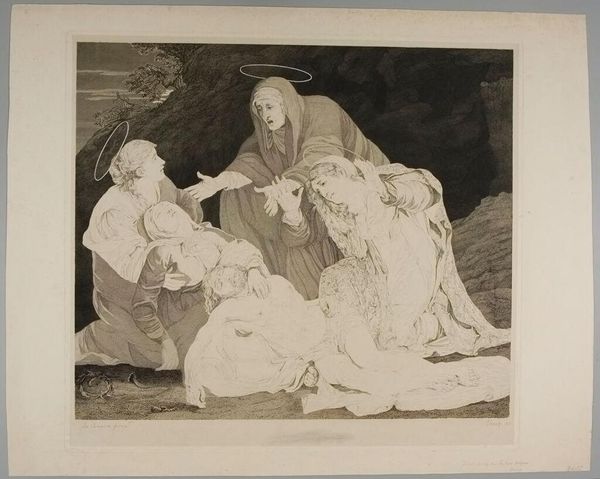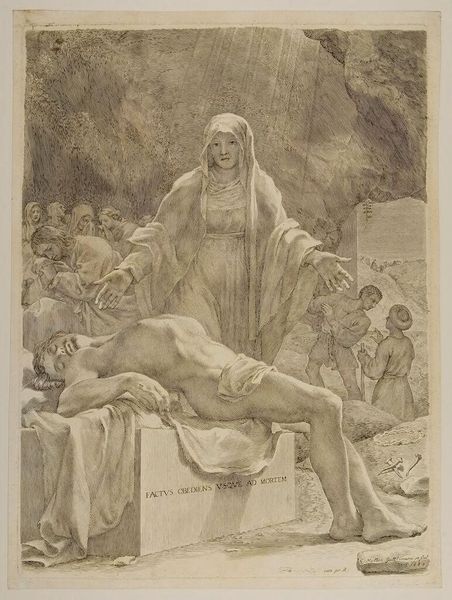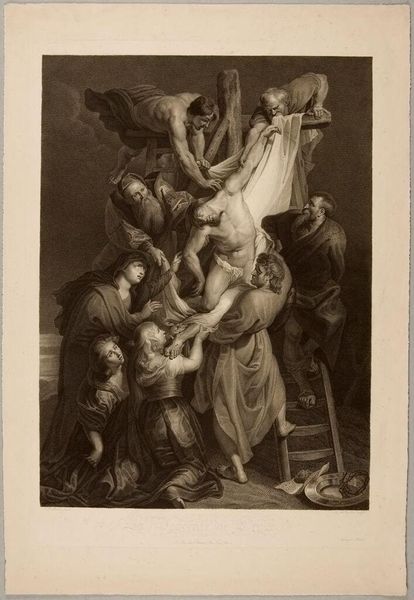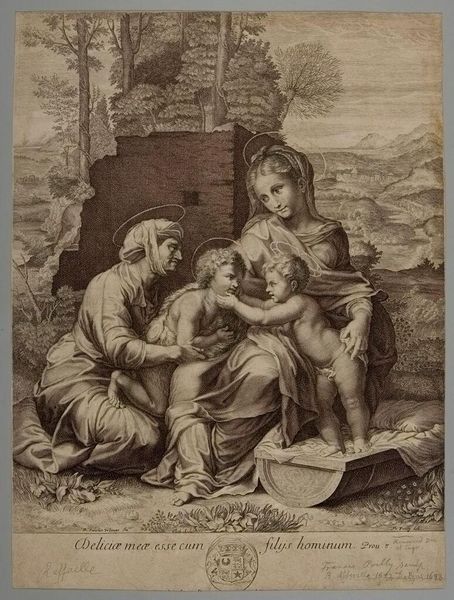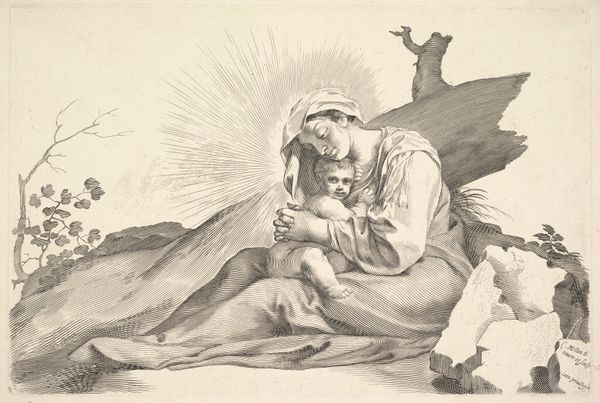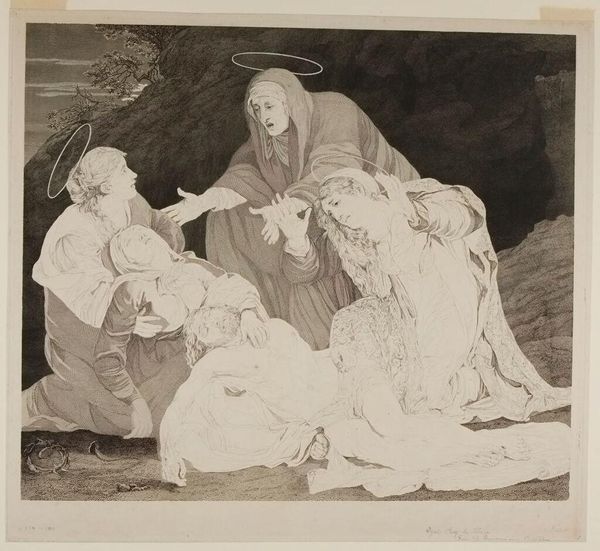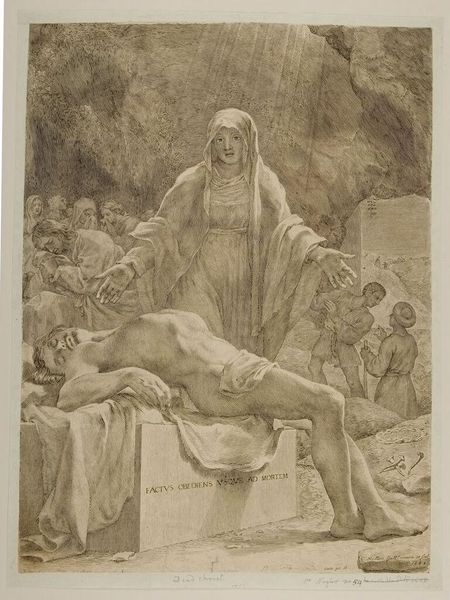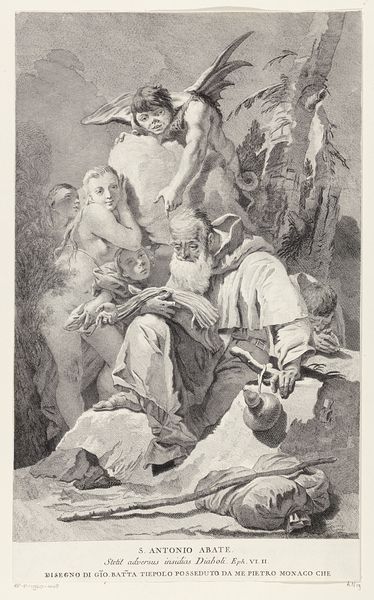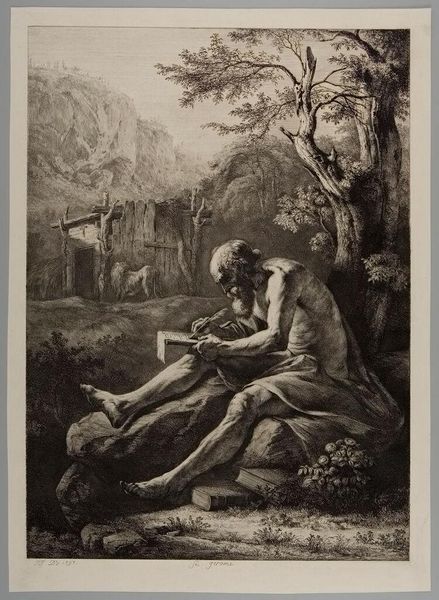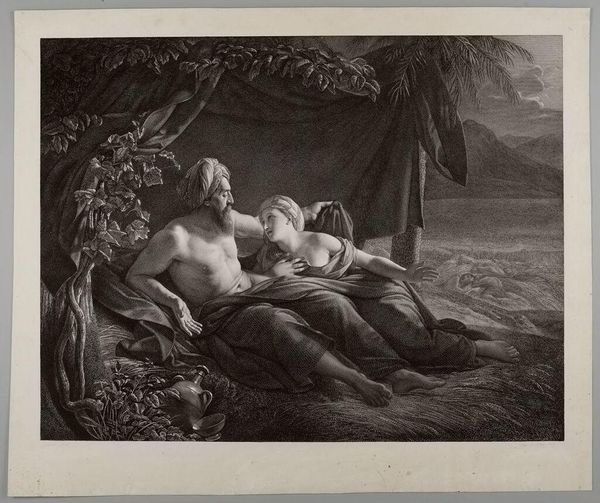
Copyright: CC0 1.0
Curator: Friedrich Weber's "Madonna of the Veil" presents a somber yet tender scene. The monochrome palette immediately evokes a sense of classicism. Editor: It feels like a study in contrasts—the delicate veil against the decaying architecture, fragility facing the ruins of empire. What was Weber trying to say? Curator: Weber likely engages with the romanticism of ruins and the Madonna iconography, perhaps examining labor through the lens of printmaking—how the image is produced and disseminated shapes its meaning. Editor: And the veil itself—is it a symbol of protection, mourning, or perhaps the ephemeral nature of beauty itself? Curator: The medium also is relevant. Consider the social context, the rise of print culture enabling wider access to religious imagery, impacting belief and devotion. Editor: I'm intrigued by how the composition guides the eye, the gaze directed from the Virgin's face down to the vulnerable child. Curator: Indeed, considering both form and the circumstances of its creation grants us deeper insight into Weber’s artistry and the 19th-century visual landscape. Editor: It all harmonizes into a statement on mortality and resilience.
Comments
No comments
Be the first to comment and join the conversation on the ultimate creative platform.
